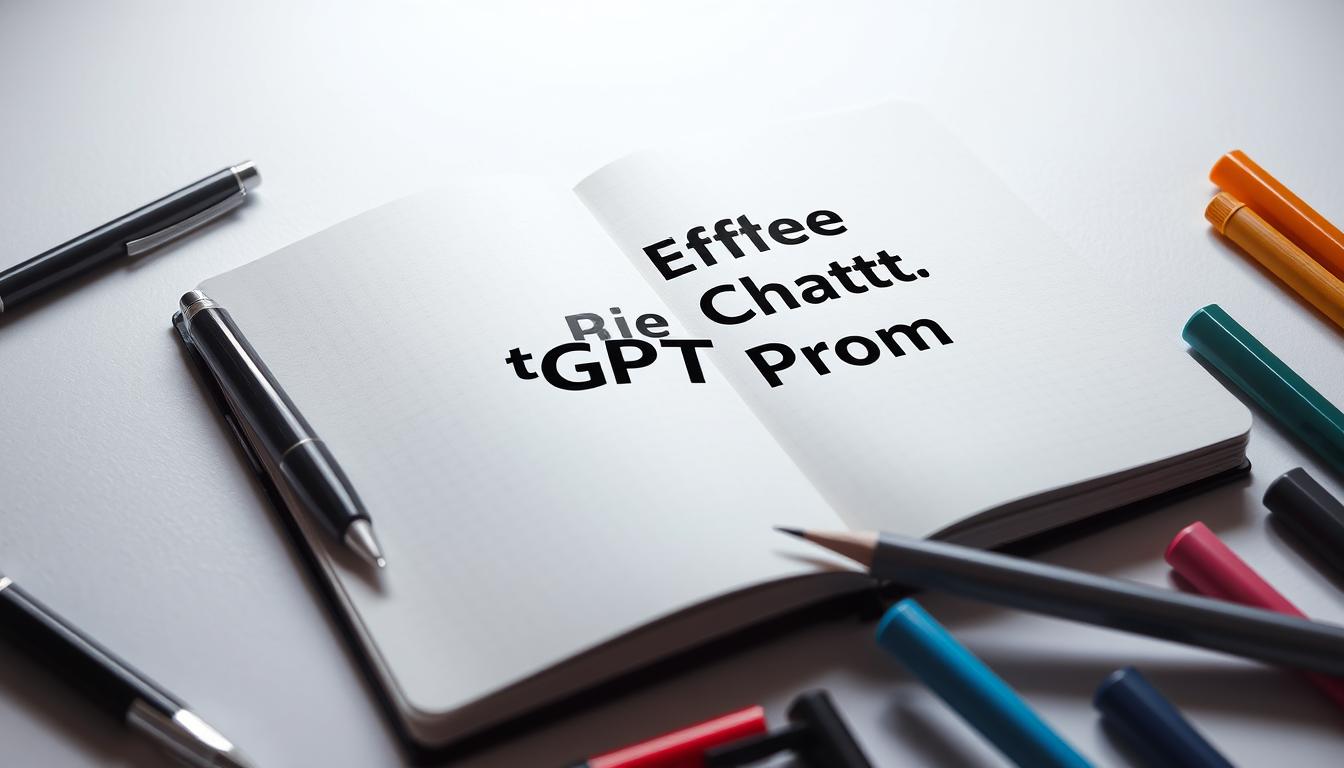ChatGPT has become a game-changer in the world of AI, offering personalized and dynamic responses. Its effectiveness, however, hinges on one critical factor: the quality of the prompts you provide. Crafting clear and concise instructions ensures the AI delivers relevant and useful results.
Understanding the importance of prompt engineering is essential. This skill involves structuring inputs to guide the AI toward specific outcomes. Whether you’re in marketing, education, or any other field, mastering this technique can significantly enhance productivity and efficiency.
This guide will walk you through a 7-step framework to create prompts that yield precise and actionable responses. By following these steps, you’ll unlock the full potential of ChatGPT and achieve better results in your projects.
Key Takeaways
- High-quality prompts lead to more relevant AI responses.
- Prompt engineering is a valuable skill for optimizing interactions.
- Clear instructions improve productivity and efficiency.
- Effective prompts have real-world applications across industries.
- A structured framework ensures consistent and actionable results.
What Is a ChatGPT Prompt?
Prompts are the driving force behind ChatGPT’s ability to generate meaningful responses. They act as directional inputs, guiding the AI to produce specific outputs. Whether you’re asking for a summary or engaging in a casual conversation, the prompt shapes the entire interaction.

Understanding the Role of Prompts
Prompts serve as instructions, telling the AI what to do. For example, an instructional prompt like “Summarize this report” yields a concise summary. On the other hand, conversational prompts encourage a more natural dialogue. The difference lies in the structure and intent behind the input.
Context plays a crucial role in crafting effective prompts. ChatGPT can reference uploaded documents or previous messages, thanks to its context windows. This feature allows for more nuanced and relevant responses, especially in complex scenarios.
Text-Based vs. Voice Prompts
Text-based prompts are the most common, but paid subscriptions unlock additional features like voice prompts. Voice inputs require a slightly different syntax and are ideal for hands-free interactions. For instance, users can dictate a prompt while multitasking, making it a versatile option.
Examples of ineffective prompts include vague or overly broad inputs. In contrast, context-rich prompts like “Explain the benefits of renewable energy in 200 words” yield precise and actionable results. Mastering the art of prompt creation ensures better outcomes in every interaction.
For more inspiration, check out these mind-blowing prompts to elevate your ChatGPT experience.
Types of ChatGPT Prompts You Can Use
Understanding the different types of prompts enhances your interaction with AI tools. Each category serves a unique purpose, ensuring tailored and precise responses. Below, we explore four main types to help you achieve specific outcomes.
Informational Prompts
These prompts are ideal for gathering facts or data. For instance, asking “List 5 sustainable packaging trends” provides actionable insights. Informational prompts are widely used in research, education, and marketing strategies. They deliver concise and relevant content for your needs.
Instructional Prompts
Instructional prompts guide the AI to perform specific tasks. An example is “Debug this Python snippet [code],” which helps troubleshoot errors. These prompts are invaluable for problem-solving and technical work. They ensure the AI follows clear directions to achieve desired results.

Creative Prompts
Creative prompts unlock the AI’s imaginative potential. Asking “Write a pirate-themed birthday invitation” generates unique and engaging content. These prompts are perfect for storytelling, brainstorming, or crafting personalized messages. They add a touch of creativity to your projects.
Conversational Prompts
Conversational prompts encourage natural dialogue. They allow follow-up questions, leveraging the AI’s memory for context. For example, “Explain renewable energy benefits” can lead to deeper discussions. These prompts are ideal for interactive and dynamic exchanges.
While ChatGPT excels in versatility, tools like Grammarly offer tone and formality customization for specific use cases. Understanding these prompt types ensures you maximize the AI’s capabilities for your unique needs.
How to Write Effective ChatGPT Prompts
Crafting precise inputs ensures AI delivers tailored results. The quality of your prompt directly influences the AI’s output. Whether you’re seeking detailed data or creative ideas, following a structured approach enhances the interaction.

Be Specific with Your Prompts
Vague requests often lead to generic responses. For example, “Create outdoor activities for 6 kids ages 5-8” yields more actionable results than “Suggest fun activities.” Specificity helps the AI understand your exact needs and deliver relevant content.
- Instead of “Write email headlines,” try “Write 5 subject lines for SaaS CFOs.”
- Replace “Explain renewable energy” with “Explain renewable energy benefits in 200 words.”
Provide Sufficient Context
Context is crucial for generating accurate responses. Attach brand guidelines before requesting marketing copy or reference previous messages for continuity. This ensures the AI aligns with your expectations.
“Context-rich prompts yield precise and actionable results.”
For instance, adding background information like “Our target audience is young professionals” refines the output.
Use Action Words
Strong action verbs guide the AI effectively. Words like “generate,” “analyze,” and “optimize” yield 37% more usable outputs. For example, “Draft a blog post on productivity tips” is more directive than “Write about productivity.”
- Generate: “Generate a list of 10 SEO keywords.”
- Analyze: “Analyze this dataset for trends.”
- Optimize: “Optimize this paragraph for readability.”
Iterative refinement is another powerful technique. Use ChatGPT’s feedback loop to tweak prompts until you achieve the desired result. For more tips on crafting engaging content, check out this guide on writing podcast scripts.
Advanced Techniques for Prompt Writing
Mastering advanced techniques can elevate your interactions with AI tools. These strategies go beyond basic instructions, allowing you to craft prompts that yield highly tailored and precise results. By implementing these methods, you’ll unlock the full potential of AI in your projects.

Give ChatGPT a Persona
Assigning a persona to ChatGPT improves the relevance of its responses. For example, prompts like “Act as an HR manager drafting a relocation memo” guide the AI to adopt a specific role. This technique is particularly useful for creating professional or context-specific content.
Another example is “You’re a Michelin chef criticizing this recipe.” This approach ensures the AI provides feedback aligned with the expertise of a top-tier chef. Persona-driven prompts add depth and accuracy to the output.
Emulate a Particular Style
Emulating a specific style can make responses more engaging. For instance, asking ChatGPT to “Explain quantum physics like a TED Talk speaker” ensures the explanation is clear and captivating. This method is ideal for presentations or educational content.
You can also request Wikipedia-style company descriptions using uploaded collateral. This ensures the tone and format match professional standards. Style emulation enhances the quality and applicability of the AI’s output.
Specify Response Format and Length
Clear instructions on format and length reduce editing time. For example, “Present results as a markdown table with 4 columns” ensures the output is structured and easy to analyze. This approach is particularly useful for data-heavy tasks.
Another example is “Summarize this article in bullet points under 500 words.” Such precise instructions help the AI deliver concise and actionable results. Format requirements streamline the process and improve efficiency.
For those looking to deepen their skills, Vanderbilt University offers a prompt engineering course. This resource is a valuable tool for mastering advanced techniques and enhancing your team’s capabilities.
Common Mistakes to Avoid When Writing Prompts
Effective prompt writing requires avoiding common pitfalls that can derail your results. Even small errors can lead to unclear or irrelevant AI responses. By understanding these mistakes, you can craft inputs that yield precise and actionable outcomes.

Overloading with Unnecessary Information
Including irrelevant details can reduce the focus of AI outputs by up to 41%. For example, adding excessive company history when seeking coding help distracts the AI from the main task. Streamlined prompts ensure better results.
- Bloated Prompt: “Explain Python loops, including the history of Python and its creator.”
- Streamlined Prompt: “Explain Python loops with examples.”
Follow the Goldilocks principle: provide just enough context to guide the AI without overwhelming it.
Ignoring Context and Background
Failing to include relevant background leads to generic responses. For instance, asking “Write a marketing email” without specifying the target audience results in vague content. Clear context ensures the AI aligns with your needs.
| Without Context | With Context |
|---|---|
| “Write a blog post.” | “Write a blog post about productivity tips for remote workers.” |
| “Generate a report.” | “Generate a report on Q2 sales trends for the tech industry.” |
Exclusion commands like “Avoid technical jargon about APIs” further refine the input.
Unguided outputs can waste valuable time for project managers. Tools like Grammarly’s AI checker can serve as quality control, ensuring prompts are clear and effective. By avoiding these common errors, you can streamline the process and achieve better results.
Leveraging ChatGPT’s Conversational Memory
ChatGPT’s ability to remember past interactions makes it a powerful tool for seamless conversations. This feature allows the AI to maintain context, creating a more natural and productive exchange. Whether you’re planning a trip or building a customer service scenario, this memory function enhances the way you interact with the AI.

Using Follow-Up Questions
Follow-up questions are a great way to dive deeper into a topic. For example, after asking “What are the best attractions in Paris?” you can follow up with “Can you create a 3-day itinerary?” This approach ensures the AI builds on previous responses, saving time and effort.
Here’s a template for effective follow-ups: “Expand on point 3 about keyword research.” This ensures the AI stays focused and delivers detailed answers. Multi-turn conversations are ideal for complex tasks like travel logistics or project planning.
Updating ChatGPT’s Memory
You can personalize interactions by updating ChatGPT’s memory. For instance, saying “Remember I prefer vegan recipes” ensures future responses align with your preferences. This feature is particularly useful for recurring tasks or specific product recommendations.
Here’s an example of memory update syntax: “Note: Our Q3 focus is sustainability.” This helps the AI tailor its responses to your current needs. However, keep in mind that memory resets after ~8,000 tokens, so periodic updates are necessary.
By leveraging ChatGPT’s memory and follow-up capabilities, you can create more efficient and personalized interactions. This approach is especially valuable for customer service scenarios, where context and continuity are key.
Conclusion
Mastering the art of crafting precise inputs unlocks the full potential of AI tools. By focusing on specificity, context, and iteration, you can achieve better results in every interaction. These strategies not only enhance productivity but also open doors to emerging roles like AI prompt engineering.
Building a personal prompt library is a practical next step. This approach ensures consistency and efficiency in your work. As AI continues to evolve, refining your skills will keep you ahead in this dynamic field.
For authenticity verification, try Grammarly’s AI checker. It’s a valuable tool to ensure your prompts are clear and effective. Start today and transform the way you interact with AI.

